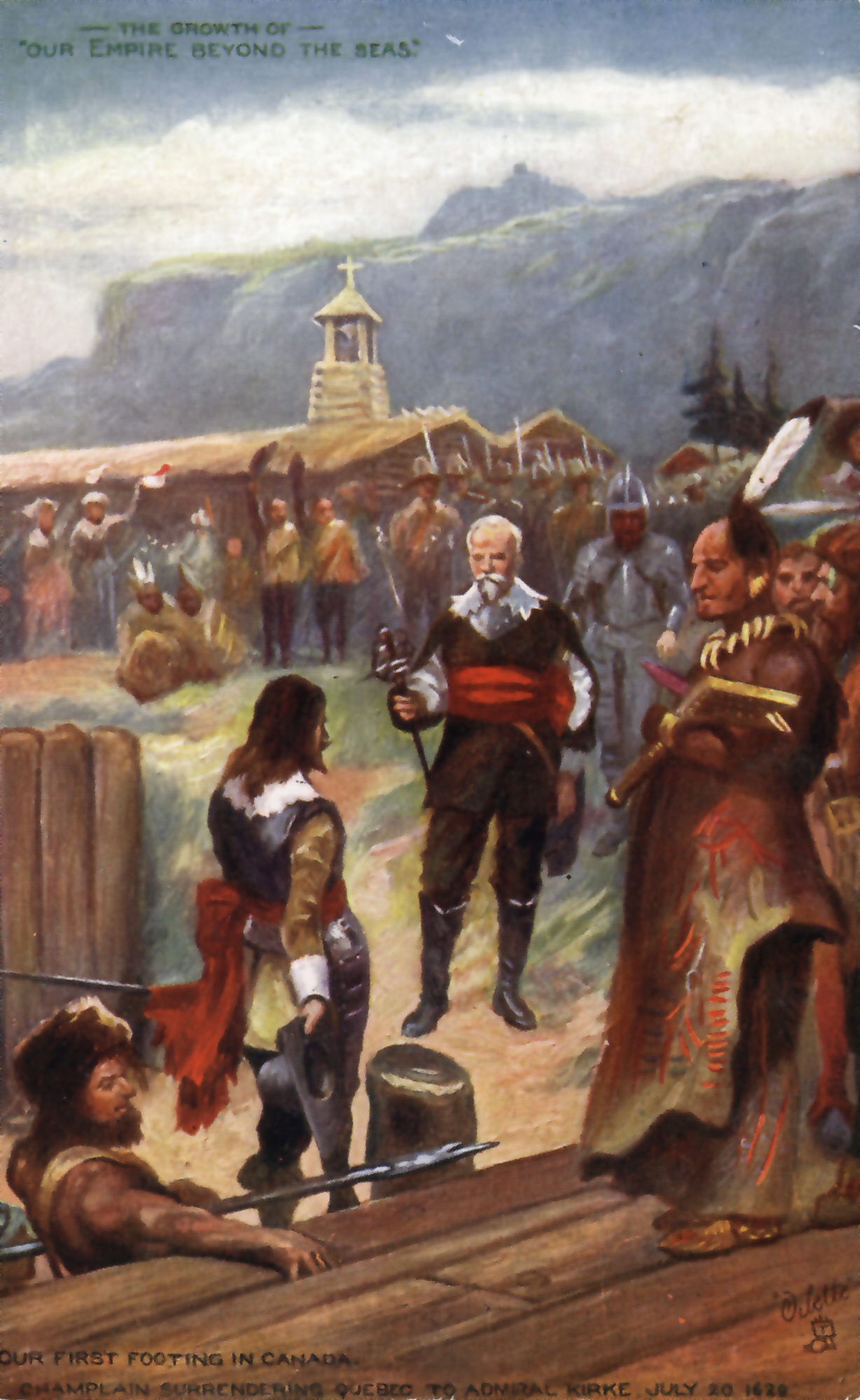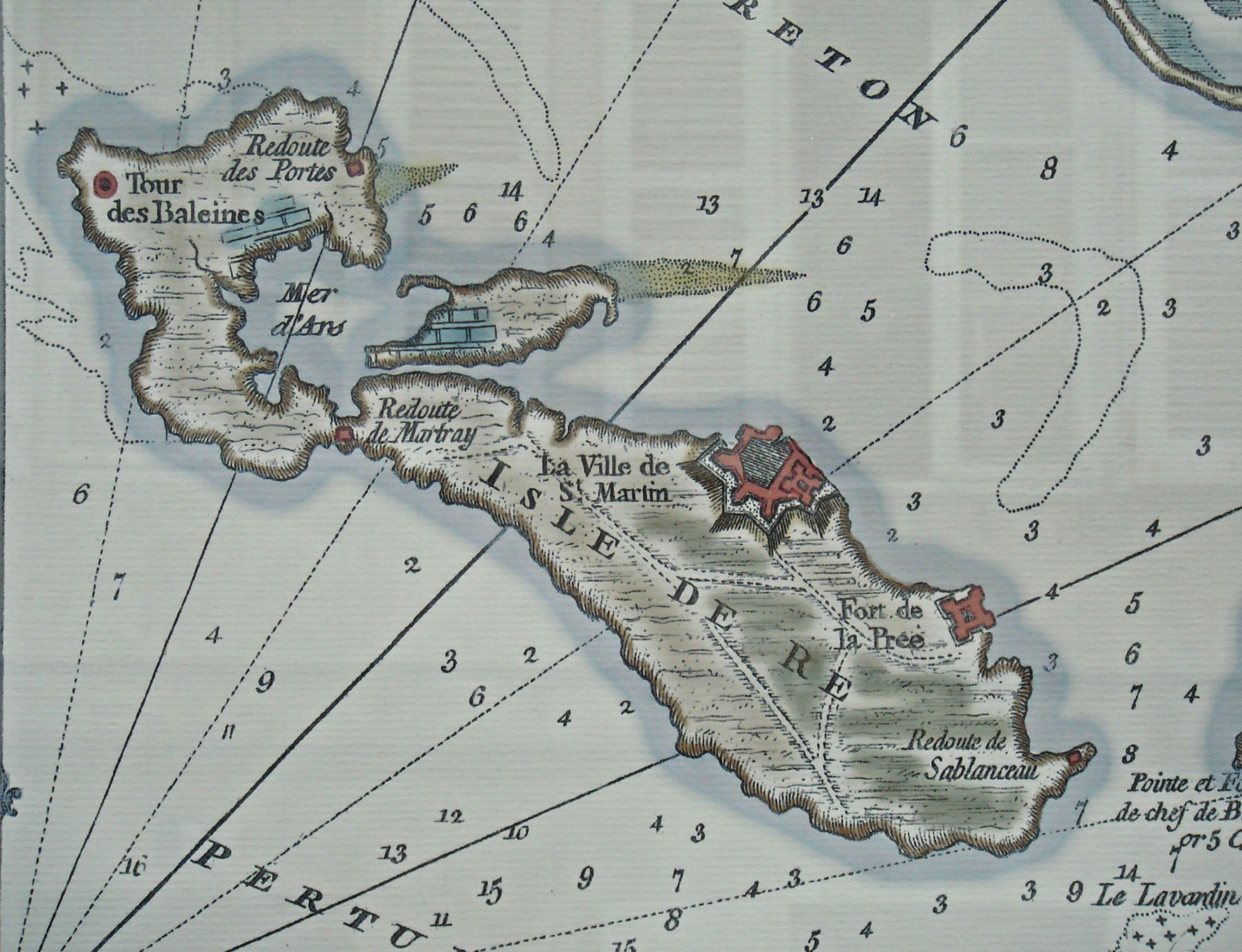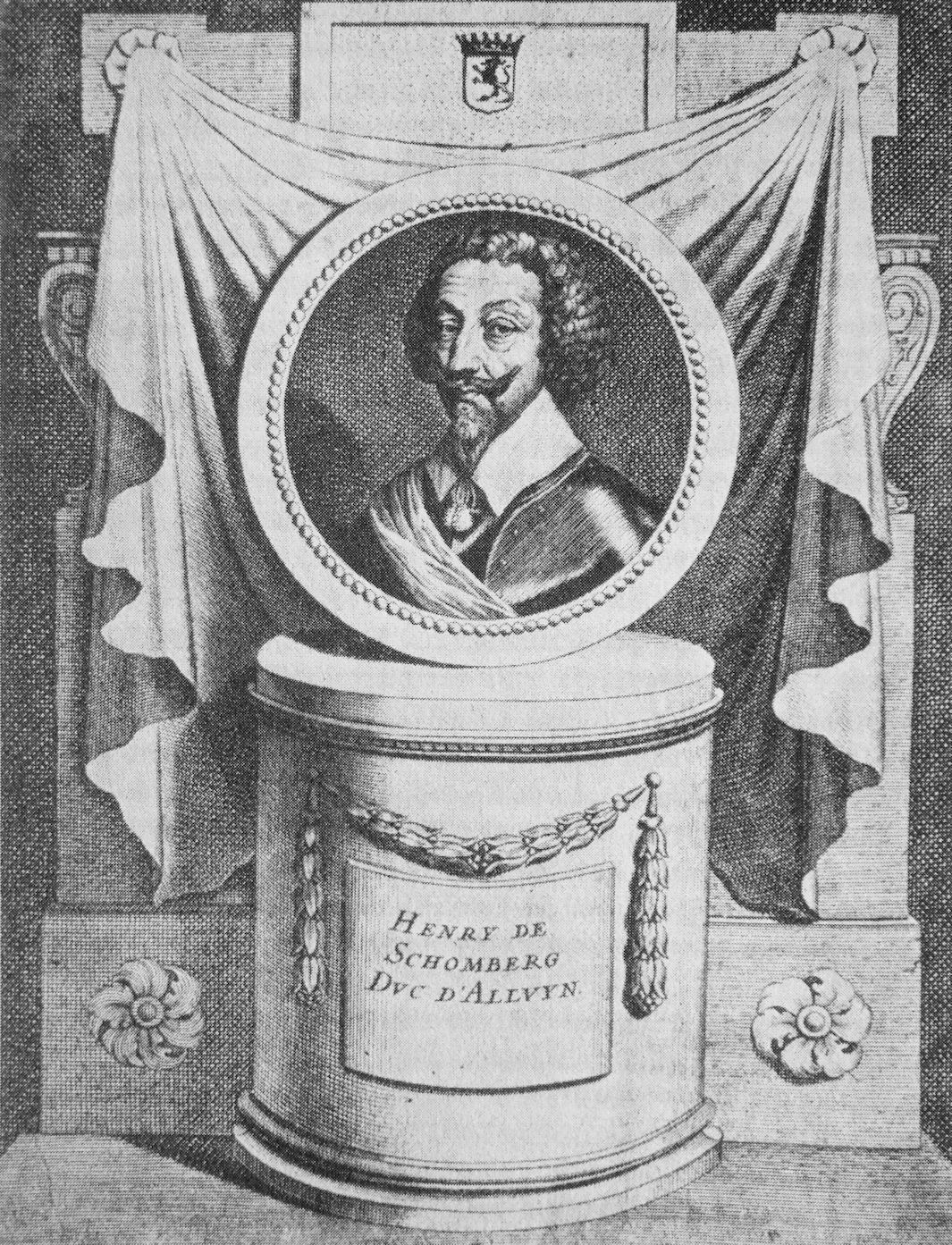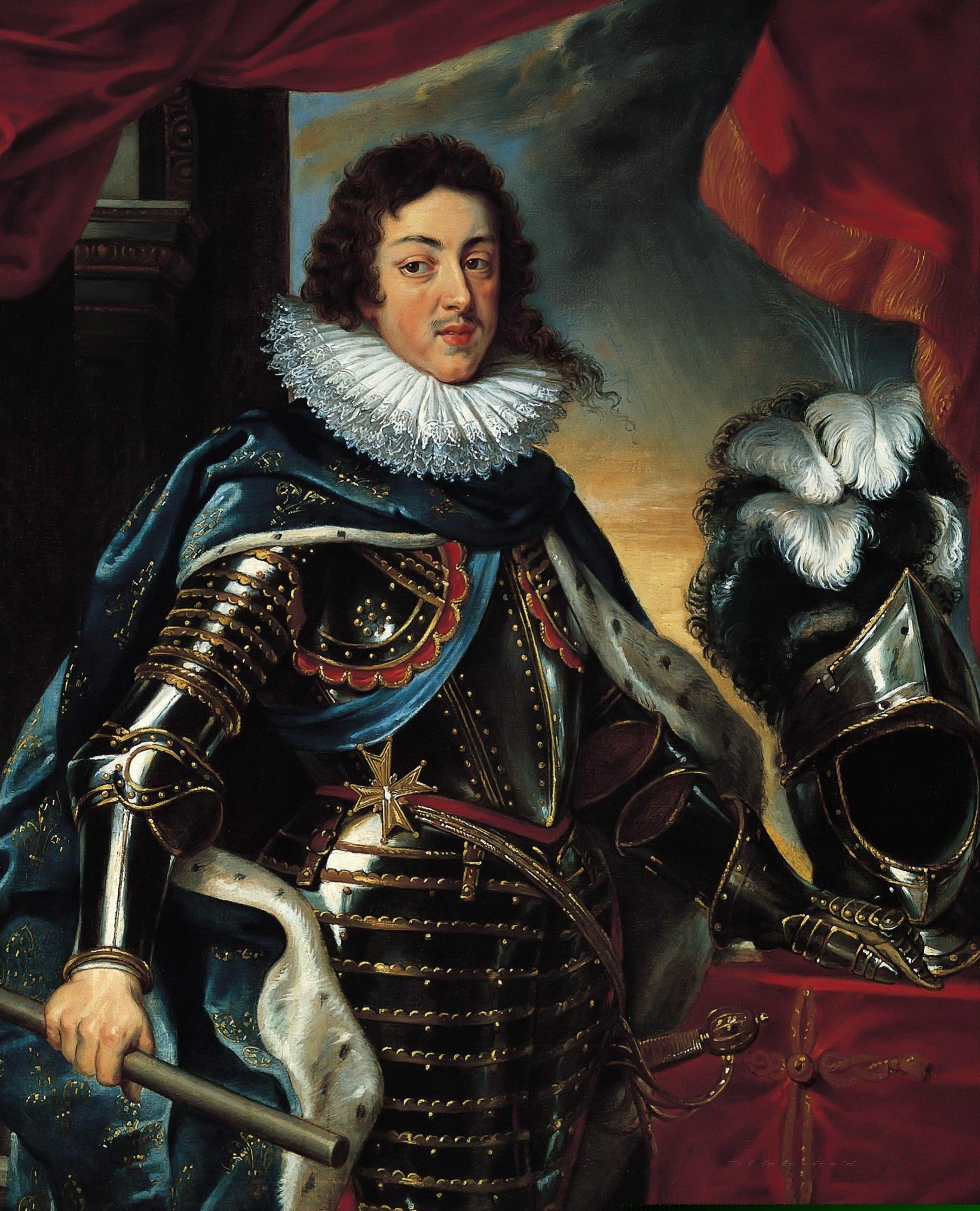|
Siege Of Saint-Martin-de-Ré (1625)
The siege of Saint-Martin-de-Ré, or siege of St. Martin's (French: ''siège de Saint-Martin-de-Ré''), was an attempt by English forces under George Villiers, the Duke of Buckingham, to capture the French fortress-city of Saint-Martin-de-Ré, on the isle of Ré (near La Rochelle), in 1627. After three months of siege, the Marquis de Toiras and a relief force of French ships and troops managed to repel the Duke, who was forced to withdraw in defeat.Fissel, p.123 The encounter followed another defeat for Buckingham, the 1625 Cádiz expedition, and is considered to be the opening conflict of the Anglo-French War of 1627–1629. Landing On 12 July 1627, an English force of 100 ships and 6,000 soldiers, having previously departed from Plymouth Sound, under the command of the Duke of Buckingham invaded the Île de Ré, landing at the beach of Sablanceau, with the objective of controlling the approaches to La Rochelle and encouraging rebellion in the city. Buckingham hoped to cap ... [...More Info...] [...Related Items...] OR: [Wikipedia] [Google] [Baidu] |
Anglo-French War (1627–1629)
The Anglo-French War of 1627–1629 () was a military conflict fought between the Kingdom of France and the Kingdom of England between 1627 and 1629. It involved mainly actions at sea.''Warfare at sea, 1500-1650: maritime conflicts and the transformation of Europe'' by Glete J Staff, Jan Glete Routledge, 2002 p.17/ref> The centrepiece of the conflict was the siege of La Rochelle (1627–1628) in which the English Crown supported the French Huguenots in their fight against the French royal forces of Louis XIII of France. La Rochelle had become the stronghold of the French Huguenots and was under their own governance. It was the centre of Huguenot seapower and the strongest centre of resistance against the central government. The English also launched a campaign against France's new colony in North America, which led to the capture of Quebec. In 1626, France concluded a secret peace with Spain, and disputes arose around Henrietta Maria's household. Furthermore, France began bu ... [...More Info...] [...Related Items...] OR: [Wikipedia] [Google] [Baidu] |
Sablanceau
Sablanceau (anciently Saint-Blanceau) is a beach at the easternmost end of the island of Île de Ré in western France. Sablanceau belongs to the Communes of France, commune of Rivedoux-Plage. English landing (1627) On 12 July 1627, an England, English invasion force of 100 ships and 6,000 soldiers under the command of the Duke of Buckingham invaded the island of Île de Ré at the beach of Sablanceau, with the objective of controlling the approaches to La Rochelle, and of encouraging the rebellion in the city. Toiras fought against the landing from behind the dunes, with a force of 1,200 infantry and 200 horsemen, but the English beachhead was maintained, with over 12 officers and 100 men dead. This landing of English troops would be followed a few days later by the dramatic Siege of Saint-Martin-de-Ré (1627). Fortifications The vulnerability of the coast to an hostile landing, proven in the English landing of 1627, highlighted the need to create some sort of fortification in ... [...More Info...] [...Related Items...] OR: [Wikipedia] [Google] [Baidu] |
William Feilding, 1st Earl Of Denbigh
William is a masculine given name of Germanic origin. It became popular in England after the Norman conquest in 1066,All Things William"Meaning & Origin of the Name"/ref> and remained so throughout the Middle Ages and into the modern era. It is sometimes abbreviated "Wm." Shortened familiar versions in English include Will or Wil, Wills, Willy, Willie, Bill, Billie, and Billy. A common Irish form is Liam. Scottish diminutives include Wull, Willie or Wullie (as in Oor Wullie). Female forms include Willa, Willemina, Wilma and Wilhelmina. Etymology William is related to the German given name ''Wilhelm''. Both ultimately descend from Proto-Germanic ''*Wiljahelmaz'', with a direct cognate also in the Old Norse name ''Vilhjalmr'' and a West Germanic borrowing into Medieval Latin ''Willelmus''. The Proto-Germanic name is a compound of *''wiljô'' "will, wish, desire" and *''helmaz'' "helm, helmet".Hanks, Hardcastle and Hodges, ''Oxford Dictionary of First Names'', Oxfor ... [...More Info...] [...Related Items...] OR: [Wikipedia] [Google] [Baidu] |
Siege Of La Rochelle
The siege of La Rochelle (, or sometimes ) was a result of a war between the French royal forces of Louis XIII of France and the Huguenots of La Rochelle in 1627–1628. The siege marked the height of Huguenot rebellions, the struggle between the Catholic Church, Catholics and the Protestant reformation, Protestants in France, and ended with a complete victory for King Louis XIII and the Catholics. Background The 1598 Edict of Nantes that ended the French Wars of Religion granted Protestants, commonly known as Huguenots, a large degree of autonomy and self-rule. La Rochelle was the centre of Huguenot seapower, and a key point of resistance against the Catholic royal government. The assassination of Henry IV of France in 1610 led to the appointment of Marie de' Medici as regent for her nine-year-old son, Louis XIII. Her removal in 1617 caused a series of revolts by powerful regional nobles, both Catholic and Protestant, while religious tensions were heightened by the outbrea ... [...More Info...] [...Related Items...] OR: [Wikipedia] [Google] [Baidu] |
Loix
Loix () is a commune in the south-west of France, located on the north coast of the Île de Ré, in the department of Charente-Maritime (region Nouvelle-Aquitaine). Geography * Loix is the smallest village and has the smallest port of the island of Ré, and is located in the middle of the salt marshes. It is a peninsula in the island, bordered by the Pier of Ars to the west and the pit of Loix to the east. Only a road, bordered by marshes (and salt marshes) gained over the sea by containment, connects Loix to the rest of the island. * Low shore, pebbles, bay and small beach in the shape of cove in the south east (pit of Loix). * At sea, a lighthouse : the Ilates. Toponymy The origin of the name of the commune seems rather vague. According to the historian Louis-Étienne Arcère, "A decree of Charles V of the year 1372, gives to the Island the name of Loys" It may be noted, however, that in relation to the ancient island on which the locality is located, it bore the names of ... [...More Info...] [...Related Items...] OR: [Wikipedia] [Google] [Baidu] |
Henri De Schomberg
Henri de Schomberg, Comte de Nanteuil (1575 – 17 November 1632), was a Marshal of France during the reign of Louis XIII. Biography Schomberg was born in Paris. He served as the Superintendent of Finances from 1619 to 1623. He became a Marshal of France in 1625. In 1628, Schomberg rescued Toiras in the Siege of Saint-Martin-de-Ré with an army of 6,000 men and some cavalry. Together with Toiras, he pursued the retreating English army of the Duke of Buckingham, with great losses being sustained by the latter. Henri de Schomberg commanded Royal troops against the Huguenot rebellions, at the Siege of Privas. In 1632 he defeated Henri II de Montmorency at the battle of Castelnaudary (1 September 1632). He died soon after, of apoplexy, on 17 November of that year in Bordeaux. Family He married Françoise d'Espinay, daughter of Claude d'Espinay in 1598 with. She died on 16 January 1602, and had 2 children: * Charles de Schomberg (1601–1656), Marshal of France Marshal ... [...More Info...] [...Related Items...] OR: [Wikipedia] [Google] [Baidu] |
Marshal Of France
Marshal of France (, plural ') is a French military distinction, rather than a military rank, that is awarded to General officer, generals for exceptional achievements. The title has been awarded since 1185, though briefly abolished (1793–1804) and for a period dormant (1870–1916). It was one of the Great Officers of the Crown of France during the and Bourbon Restoration in France, Bourbon Restoration, and one of the Grand Dignitaries of the French Empire, Grand Dignitaries of the Empire during the First French Empire (when the title was Marshal of the Empire, not Marshal of France). A Marshal of France displays seven stars on each shoulder strap. A marshal also receives a Baton (military), baton – a blue cylinder with stars, formerly fleur-de-lis, fleurs-de-lis during the monarchy and French Imperial Eagle, eagles during the First French Empire. The baton bears the Latin inscription of ', which means "terror in war, ornament in peace". Between the end of the 16th century a ... [...More Info...] [...Related Items...] OR: [Wikipedia] [Google] [Baidu] |
French Livre
The livre (abbreviation: Pound sign, £ or Livre tournois, ₶., French language, French for (pound)) was the currency of Kingdom of France and its predecessor states of Francia and West Francia from 781 to 1794. Several different livres existed, some concurrently. The livre was the name of coins and of units of account. History Origin and etymology The livre was established by Charlemagne as a unit of account equal to one Pound (mass), pound of silver. It was subdivided into 20 ''French sol, sous'' (also ''sols''), each sou equalling 12 ''French denier, deniers''. The word ''livre'' came from the Latin word ''Ancient Roman units of measurement#Weight, libra'', a Roman unit of weight and still the name of a Pound (mass), pound in modern French, and the denier comes from the Roman denarius. This system and the denier itself served as the model for many of Europe's currencies, including the British pound, Italian lira, Spanish dinero and the Portuguese dinheiro. This first l ... [...More Info...] [...Related Items...] OR: [Wikipedia] [Google] [Baidu] |
Cardinal Richelieu
Armand Jean du Plessis, 1st Duke of Richelieu (9 September 1585 – 4 December 1642), commonly known as Cardinal Richelieu, was a Catholic Church in France, French Catholic prelate and statesman who had an outsized influence in civil and religious affairs. He became known as the Red Eminence (), a term derived from the style of Eminence (style), Eminence applied to Cardinal (Catholic Church), cardinals and their customary red robes. Consecrated a bishop in 1607, Richelieu was appointed Secretary of State for Foreign Affairs (France), Foreign Secretary in 1616. He continued to rise through the hierarchy of both the Catholic Church and the French government, becoming a Cardinal (Catholic Church), cardinal in 1622 and Chief minister of France, chief minister to King Louis XIII, Louis XIII of France in 1624. He retained that office until his death in 1642, when he was succeeded by Cardinal Cardinal Mazarin, Jules Mazarin, whose career the cardinal had fostered. Richelieu became enga ... [...More Info...] [...Related Items...] OR: [Wikipedia] [Google] [Baidu] |
Earl Of Holland
Earl of Holland was a title in the Peerage of England. It was created in 1624 for Henry Rich, 1st Baron Kensington. He was the younger son of Robert Rich, 1st Earl of Warwick, and had already been created Baron Kensington in 1623, also in the Peerage of England, having married Isabelle Cope, daughter and sole heiress of Sir Walter Cope (c.1553-1614), of Cope Castle in Kensington, Middlesex. His eldest son, the second Earl, succeeded his first cousin as fifth Earl of Warwick in 1673. All the titles became extinct on the death of the eighth Earl of Warwick and fifth Earl of Holland in 1759 (see Earl of Warwick for a more detailed description of the descent of the titles). Lady Mary Rich, daughter of the first Earl of Holland, married Sir John Campbell, 5th Baronet, who was created Earl of Breadalbane and Holland in the Peerage of Scotland in 1681. Also, Lady Elizabeth Rich, only daughter and heiress of the fifth Earl of Warwick and second Earl of Holland, married Francis Edwa ... [...More Info...] [...Related Items...] OR: [Wikipedia] [Google] [Baidu] |
Norfolk
Norfolk ( ) is a Ceremonial counties of England, ceremonial county in England, located in East Anglia and officially part of the East of England region. It borders Lincolnshire and The Wash to the north-west, the North Sea to the north and east, Cambridgeshire to the west, and Suffolk to the south. The largest settlement is the city of Norwich. The county has an area of and a population of 859,400. It is largely rural with few large towns: after Norwich (147,895), the largest settlements are King's Lynn (42,800) in the north-west, Great Yarmouth (38,693) in the east, and Thetford (24,340) in the south. For local government purposes Norfolk is a non-metropolitan county with seven districts. The centre of Norfolk is gently undulating lowland. To the east are the Broads, a network of rivers and lakes which extend into Suffolk and which are protected by the Broads Authority, which give them a similar status to a National parks of England and Wales, national park. To the west the ... [...More Info...] [...Related Items...] OR: [Wikipedia] [Google] [Baidu] |
William Beecher (died 1651)
Sir William Beecher (1580–1651) was an English diplomat, soldier and politician who sat in the House of Commons at various times between 1614 and 1629. Beecher was ''Chargé d'Affaires'' in France from 1609 to 1610.Gary M. Bell, A handlist of British diplomatic representatives 1509-1688 (Royal Historical Society, Guides and handbooks, 16, 1990 In 1614, he was elected Member of Parliament for Knaresborough in the Addled Parliament. He was ''Agent'' or ''Chargé d'Affaires'' in Francs from 1617 to 1619. In 1621 he was elected MP for Shaftesbury and Leominster and was expelled at Shaftesbury. He was knighted in 1622. He served as Clerk of the Privy Council from 1623 until he resigned in 1641. In 1624 he was elected MP for Leominster again. He was elected MP for Dover in 1625 and for Ilchester in 1626. In 1627 he took part in the Siege of Saint-Martin-de-Ré when he commanded a small supply fleet with 400 raw troops. In 1629 he was elected MP for Windsor and sat until 1629 wh ... [...More Info...] [...Related Items...] OR: [Wikipedia] [Google] [Baidu] |





